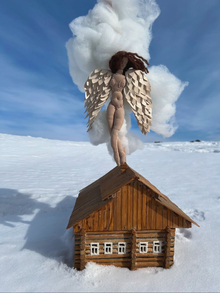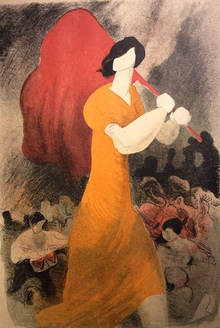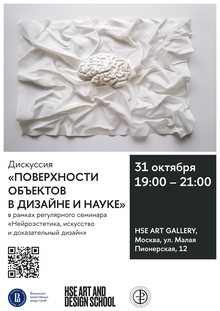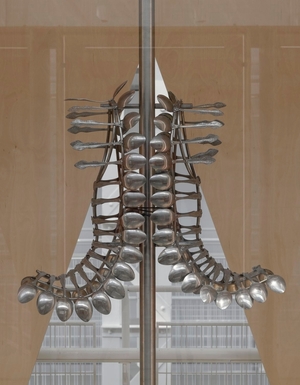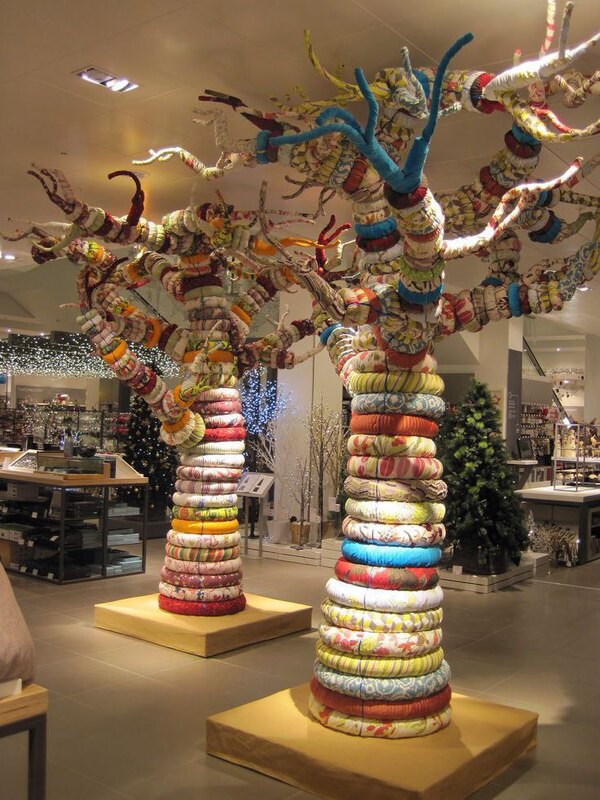
Challenges, Opportunities, and future of Recycled Art in Creativocacy
Trash into treasure—easier said than done.
Not all recycled art is welcome, and not all artists are seen as visionaries. The world still grapples with the stigma of waste, the fragility of sustainable materials, and the logistical maze of transforming discarded objects into long-lasting masterpieces. This chapter unpacks the real-world struggles of artists working in this field, from the lack of institutional support to the ongoing battle against society’s obsession with the new. Yet, amidst these struggles, opportunities emerge. As industries shift toward circular economies, could recycled art become the new gold standard?
Recycled art is more than a creative approach, it is a cultural rebellion. Artists who work with found, discarded, and salvaged materials are not just making things; they are making statements. They challenge deeply embedded beliefs about value, beauty, ownership, and sustainability. But behind every powerful installation built from plastic bottles or e-waste lies a complex journey filled with resistance, resilience, and renewal.
In this chapter, we explore the real-world struggles faced by artists working with recycled materials, and how, despite or because of these difficulties, they often uncover new possibilities, platforms, and paths for change. Here lies the future of arts as one of the major tools of sustainability in the new artistic age of recycling in arts, and the use of artistic creativity as advocacy.
The Struggles: What Recycled Artists Are Up Against
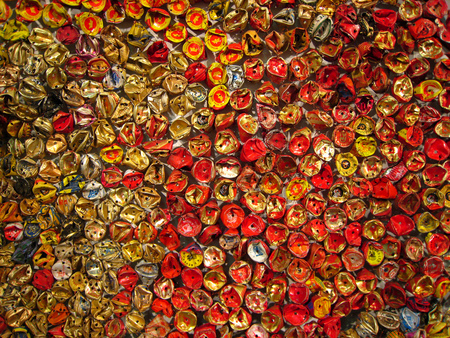
- Lack of Institutional Support
Many galleries, museums, and funding bodies still favor traditional media, painting, sculpture, photography, over experimental work made with «non-art» materials. Recycled art often struggles to be recognized as fine art.
Real-World Case: In the early 2000s, Nigerian artist El Anatsui was initially dismissed by curators who saw his bottle-cap installations as «craft» rather than museum-worthy masterpieces. It wasn’t until major institutions like the Venice Biennale and The Met recognized his work that his materials gained legitimacy.
Challenge: Limited access to grants, residencies, and curatorial platforms. Difficulty in pricing or selling ephemeral or unconventional works.
The Stigma of Trash Society is conditioned to view trash as dirty, useless, or shameful. Artists who use waste materials often face skepticism, not just from institutions, but from the public and collectors.
«People ask me why I work with garbage. I ask them: why are you throwing this away?» — Vik Muniz
Challenge: Misconceptions about the hygiene or safety of reused materials. Perceived lower monetary value of artworks made from «waste.»
Public Perception and Community Pushback
Case Study: Denis Carbonaro’s 'Artivist' Installations in Dalgety Bay, Fife.
In Dalgety Bay, Fife, artist Denis Carbonaro transformed his front garden into an art installation using discarded items such as shopping trolleys, prams, and even underwear on a washing line. While Carbonaro viewed his work as a form of creative protest and expression, neighbors perceived it as an unsightly accumulation of rubbish. The installation led to a petition with over 1,200 signatures demanding its removal, highlighting the tension between artistic intent and public acceptance.
Challenges Highlighted: Community Relations: Artistic expressions using recycled materials can be misunderstood, leading to community disputes and negative perceptions.
Aesthetic Acceptance: Differing views on what constitutes art versus waste can result in public opposition and challenges in gaining community support.
Technical and Logistical Barriers
Working with reclaimed materials requires resourcefulness and labor. Unlike standardized paint or canvas, found objects are unpredictable, damaged, or irregular.
Common Challenges Include: - Storage and sorting of collected materials. - Safety hazards (sharp metals, toxic paints, organic rot). - Fragility and preservation of ephemeral pieces. - Transportation and installation of large or heavy objects.
Real-World Case: The Washed Ashore Project spends months cleaning ocean plastic before it can be sculpted into public artwork. Each sculpture involves volunteers, logistics, and community buy-in, making it more a civic project than a solo art piece.
Stephanie Hongo, a Southington-based artist, creates intricate animal sculptures from trash. Her process involves meticulous selection, cleaning, and assembly of discarded materials, followed by painting and finishing. Despite the uniqueness of her work, Hongo faces challenges such as sourcing suitable materials, extensive labor, and fluctuating sales, which impact the sustainability of her art practice.
Challenges Highlighted: Material Sourcing: Finding appropriate discarded materials requires time and effort, often without consistent availability.
Labor Intensive: Transforming waste into art is a meticulous process that demands significant time and dedication.
Market Viability: Fluctuating sales and public interest can affect the financial sustainability of recycled art projects.
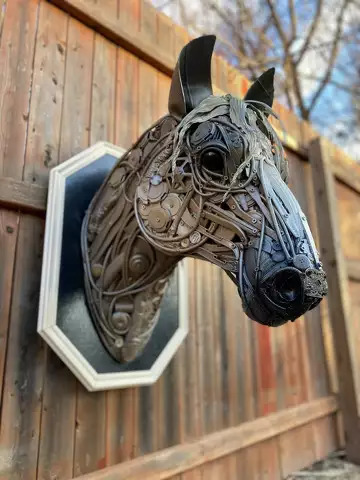
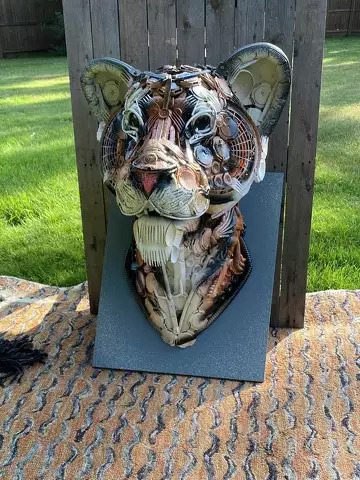
(L-R) A palomino horse named Praline and a tiger named Malachi created from pieces of trash by Southington-based artist Stephanie Hongo. Courtesy of Stephanie Hongo
«When I say my work is about old wood or worn fabric, people smile. When I show them what that wood and fabric say, they listen.» — Local artist, São Paulo, Brazil
Cultural Obsession with the «New»
From fashion to technology, modern societies are driven by novelty, convenience, and speed. Recycled art offers the opposite: slowness, reuse, and contemplation. This counter-cultural stance can be hard to sell.
Challenge: Art markets prioritize fresh aesthetics and trends. Recycled art is often labeled as «niche» or «activist» rather than «universal» or «contemporary.»
The Opportunities: Where Recycled Art Thrives
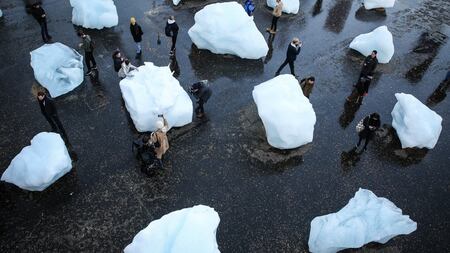
Despite the barriers, artists working with recycled materials are opening new doors in areas where traditional art forms may not reach.
Growing Global Awareness
As climate change, pollution, and overconsumption dominate headlines, audiences are more receptive to messages embedded in recycled art.
Opportunity: Collaborations with environmental organizations, schools, and policy groups. Eco-conscious collectors and curators seeking purpose-driven works. Greater inclusion in sustainability and climate-focused exhibitions.
Example: Olafur Eliasson’s Ice Watch reached millions online, not because it was a glacial installation, but because it gave the climate crisis a face and a timeline.
Art Education and Youth Engagement
Recycled art is thriving in educational settings where young people are learning to see waste as resource.
Opportunity: Schools and universities use recycled art in environmental curriculum. Youth-led art projects empower the next generation of eco-creators. Artists are invited to run public workshops, residencies, and installations.
Example: The «Trash is Treasure» program in South Africa trains teens to make murals and sculptures from plastic. It has reduced local litter and boosted school attendance.
Public Space and Social Practice
Because of its material and message, recycled art is ideal for public engagement. Murals, park sculptures, and street art invite interaction and reflection.
Opportunity: More funding from municipal governments for urban beautification. Integration into green design, architecture, and community healing projects. Site-specific art that activates conversation in neglected spaces. «A wall of rusted bike wheels says more to my city than a golden statue in a museum ever could.» — Urban artist, Berlin
The journey of artists working with recycled materials is fraught with challenges, from public misunderstanding to technical hurdles. However, these obstacles often pave the way for opportunities that not only elevate the art form but also foster community engagement and environmental advocacy. By navigating these complexities, recycled art continues to evolve, challenging perceptions and inspiring sustainable practices worldwide.
What the future holds for creativocacy and eco-arts in the context of recycled materials.
Shifting Paradigms: From Protest to Proposal
For decades, eco-art was primarily reactive: a creative protest against environmental degradation and cultural excess. But the future of eco-art lies in proactive systems thinking, designing alternative futures, creating new material economies, and contributing to real-world sustainability solutions.
This shift means artists will increasingly work as: Policy advisors Eco-educators Design innovators Cultural futurists
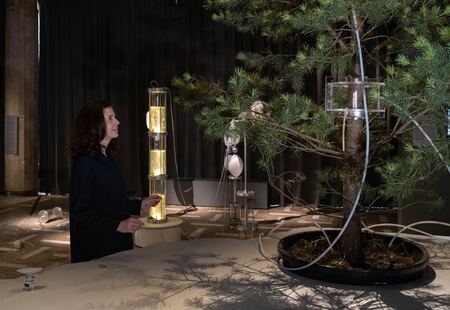
Emerging Mediums and Technologies
Bio-Art and Living Installations Artists are increasingly working with organic, regenerative, or biodegradable materials, designing installations that live, grow, or decay.
Examples: - Agnes Meyer-Brandis grows moss in controlled environments to explore atmospheric memory. - Philip Beesley uses responsive sensors and artificial cells to simulate breathing ecosystems. Artists are collaborating with mycologists to grow sculptures from mycelium (mushroom roots), a renewable alternative to plastics.
What’s next? Living installations that clean air, grow food, or monitor pollution.
Augmented Reality (AR) and Immersive Storytelling As digital art tools evolve, artists are turning to AR and immersive technologies to create eco-conscious experiences that overlay the real world.
Examples: Digital forests growing on city walls via AR apps. Virtual endangered species appearing in urban spaces, sparking curiosity and conservation. AR waste trails showing the journey of plastic from supermarket shelf to ocean gyre.
The future: Interactive eco-art will allow global audiences to participate in environmental storytelling without physical materials, reducing waste while expanding reach.
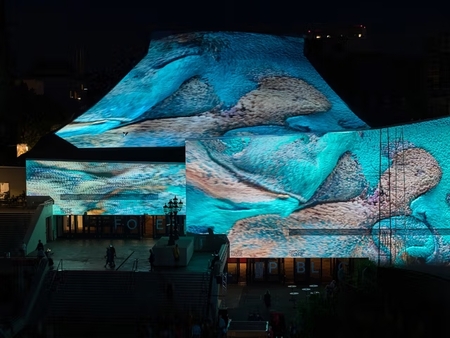
Refik Anadol created Glacier Dreams (2023), a large-scale projection, by processing more than 100 million images © Refik Anadol Studio
AI, Data-Driven Art, and Algorithmic Activism AI tools can now generate art using real-time data, like deforestation rates, rising sea levels, or wildlife extinction timelines.
Examples: Refik Anadol creates immersive installations using NASA climate data to visualize melting ice shelves. Artists are designing predictive visuals that simulate urban flooding or desertification based on local emissions.
What’s next? AI art co-created with environmental researchers that guides urban planning, climate policy, and public awareness.
Projected Trends in Creativocacy and Eco-Art
Sensor-Integrated Eco-Art Prediction: By 2030, over 50% of public eco-art installations will include sensors or responsive components. Examples: Living sculptures that respond to air or water quality in real time. Urban art that changes color or movement based on weather or pollution levels. Biofeedback-driven installations that react to human touch, heartbeat, or emotion.
Impact: Art will become an environmental interface, translating invisible forces into emotional experiences.
Blockchain and Eco-Transparency in Art Prediction: Blockchain will become a tool for artists to trace the environmental footprint of their work, and to directly fund restoration efforts.
Emerging Practices: Carbon-offset NFTs where each artwork funds reforestation or conservation. Proof-of-Origin tokens verifying ethical sourcing of recycled materials. Artist collectives using DAOs (Decentralized Autonomous Organizations) to fund community clean-up efforts.
Impact: Artists will not only be makers, but ecosystem participants, accountable for their creations in a global supply web.
Conclusion: The Future Is Already Here
Visioning the Future: A Story From 2040
In the year 2040, a coastal city unveils a living mural. It’s painted with algae-based pigments, embedded with carbon sensors, and powered by solar micro-films. Every color change reveals the status of the bay’s marine health. Children pass by and trace the patterns on the wall, their touch generating new soundscapes based on ocean pH levels. A QR scan offers poetry written by local elders. It’s not just a mural. It’s a library, a guardian, a conversation, and a promise. This is art in the age of restoration.
Conclusion: The Future Is Already Here Eco-Art and Creativocacy are not waiting for the future, artists are building it now. In this unfolding era, creativity is not a luxury or entertainment. It is a strategic, necessary, and radical tool for survival, for justice, and for re-enchantment. The artists leading this revolution are not just observers. They are visionaries, innovators, and architects of hope. And as their numbers grow, so too does the potential for a world remade, not in fear, but in imagination.
«Recycled Art is no longer just a mirror with which we see our world. It is a blueprint to sustain it.» — Mayowa Johnson Agbeniga, 2025
Art Basel. (2020). Art and environmental change: The growing role of eco-art and sustainability in the art world. Art Basel. https://www.artbasel.com
Banksy. (n.d.). Art and social change. Retrieved March 28, 2025, from https://www.banksy.co.uk
Eliasson, O. (2003). The Weather Project [Installation]. Tate Modern, London, UK.
Goguikian Foundation. (2013). Extraordinary Art Exhibition. Retrieved March 28, 2025, from http://www.goguikianfoundation.org
Goldsworthy, A. (1980s). Earth Art [Various works]. Nature-based installations worldwide.
Hein, J. (n.d.). Interactive installations and eco-art. Retrieved March 28, 2025, from https://www.jeppehein.com
Muniz, V. (2010). Wasteland [Documentary]. Directed by Lucy Walker.
Noble, T., & Webster, S. (1998). Dirty White Trash (With Gulls) [Shadow sculpture]. Private collection.
Roosegaarde, D. (2016). Smog Free Project. Smog Free Tower. Studio Roosegaarde. https://www.studioroosegaarde.net
Smithson, R. (1970). Spiral Jetty [Land art installation]. Great Salt Lake, Utah, USA.
Walker, K. (2016). The «Trash Island Project». Pacific Islands, recycled ocean plastic sculptures.
United Nations Environment Programme. (2021). Annual report 2021. United Nations Environment Programme. https://wedocs.unep.org/bitstream/handle/20.500.11822/37946/UNEP_AR2021.pdf
Forbes, M. (2020, June 20). Understanding Ai Weiwei in 10 works of art. The Collector. https://thecollector.vercel.app/ai-weiwei/
Camara, K. (2024, October 22). My 'nightmare' neighbour hangs his UNDERWEAR on top of 'eyesore' pile of rubbish on front garden — he says it’s 'art'. The Sun. https://www.thesun.co.uk/news/31234901/my-nightmare-neighbour-eyesore-in-garden/
Camara, K. (2023, August 17). Trash sculptor Stephanie Hongo turns trash into treasure in Southington, CT. CT Insider. https://www.ctinsider.com/living/article/stephanie-hongo-trash-sculptor-southington-ct-20179468.php
Garbage Patch State. (n.d.). Gallery. Garbage Patch State. https://www.garbagepatchstate.org/eng/gallery.html
The Recycled Orchestra. (n.d.). The Recycled Orchestra of Cateura. Appropedia. https://www.appropedia.org/The_recycled_orchestra
Recycled Orchestra. (2015). The Recycled Orchestra of Cateura: Music from trash [Video]. YouTube. https://www.youtube.com/watch?v=fXynrsrTKbI&t=42s
Imidibaniso. (n.d.). Waste art. Imidibaniso. https://www.imidibaniso.co.za/research/equity-and-inequality/waste-art/
Homegrown. (2023, November 15). A Homegrown art collective creating eco-friendly art using the waste on Kozhikode beach. Homegrown. https://homegrown.co.in/homegrown-voices/a-homegrown-art-collective-creating-eco-friendly-art-using-the-waste-on-kozhikode-beach
WASCO Waste Collection & Recycling Co. (n.d.). About Us. WASCO Waste Collection & Recycling Co. https://www.theorg.com/org/wasco-waste-collection-recycling-co
Ball, J. (2024, September 19). UN General Assembly posters art exhibition. The Guardian. https://www.theguardian.com/artanddesign/2024/sep/19/un-general-assembly-posters-art-exhibition
Dillon, A. (2024, September 10). Artists launch ‘Future Ours’ project at UN summit. Observer. https://observer.com/2024/09/artists-future-ours-project-un-summit-of-the-future/
Palazzo Strozzi. (n.d.). Museo AeroSolar. Palazzo Strozzi. https://www.palazzostrozzi.org/en/museoaerosolar/
Pistoletto, M. (n.d.). Venus of Rags. Escape into Life. https://www.escapeintolife.com/art-reviews/michelangelo-pistoletto-venus-of-rags/#: ~:text=This%20is%20an%20artwork%20of, with%20our%20now%20omnipresent%20waste
Artsper. (2022, October 12). Top 10 of recycled art. Artsper Blog. https://blog.artsper.com/en/get-inspired/top-10-of-recycled-art/#: ~:text=British%20artists%20Tim%20Noble%20and, realistic%20image%20on%20the%20wall
The Art Story. (n.d.). Louise Nevelson. The Art Story. https://www.theartstory.org/artist/nevelson-louise/#: ~:text=The%20larger%20than%20life, accurately%20reflect%20the%20enormity%20and
Eternity Gallery. (n.d.). Arman. Eternity Gallery. https://www.eternitygallery.com/arman-fernandez
The Collector. (2021, April 10). What was great about Marcel Duchamp’s Fountain? The Collector. https://www.thecollector.com/what-was-great-about-marcel-duchamp-fountain/
Picasso, P. (1942). Bull’s Head [Photograph]. Musée Picasso, Paris. https://en.wikipedia.org/wiki/Bull%27s_Head#/media/File: Pablo_Picasso, _1942, T%C3%AAte_de_taureau(Bull%27s_Head), _Mus%C3%A9e_Picasso, _Paris.jpg
Muniz, V. (2010). Beauty in the land of waste: Junk portraits by Vik Muniz. Recycle Nation. https://recyclenation.com/2010/07/beauty-land-waste-junk-portraits-vik-muniz/
The Art Story. (n.d.). Kurt Schwitters. The Art Story. https://www.theartstory.org/artist/schwitters-kurt/
Museum of Modern Art. (n.d.). Artwork: Merzbau by Kurt Schwitters. MoMA. https://www.moma.org/collection/works/81006
Guinness World Records. (2018, August 2). 10,000 pieces of waste transformed into record-breaking art piece to encourage recycling. Guinness World Records. https://www.guinnessworldrecords.com/news/commercial/2018/8/10-000-pieces-of-waste-transformed-into-record-breaking-art-piece-to-encourage-re-536581
Eco Art Database. (n.d.). Eco-art showcase. Eco Art Database. https://ecoartdatabase.org/en/showcase/
The Art Newspaper. (2023, June 13). Refik Anadol brings climate crisis to a scorching Basel with AI-generated glacier installation. The Art Newspaper. https://www.theartnewspaper.com/2023/06/13/artist-refik-anadol-brings-climate-crisis-to-a-scorching-basel-with-ai-generated-glacier-installation
